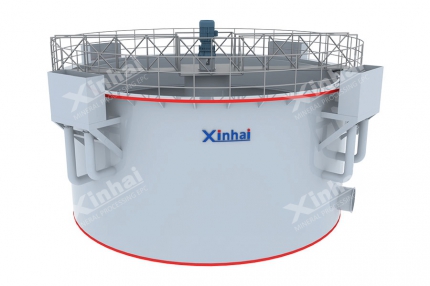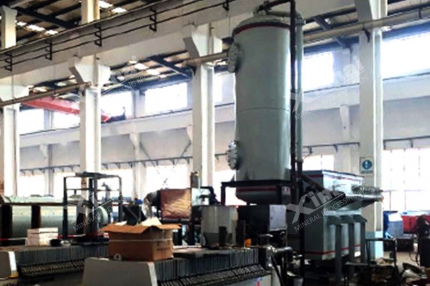Carbon leaching method for gold extraction (CIL) means the activated carbon is added into the pulp, and leaching and adsorption of gold are carried out simultaneously. This gold extraction process is developed on the basis of CIP, which combines the two steps of cyanide leaching pulp and activated carbon adsorption into one, reducing the number of leaching tanks, shortening the process flow, and reducing the capital investment and production cost.
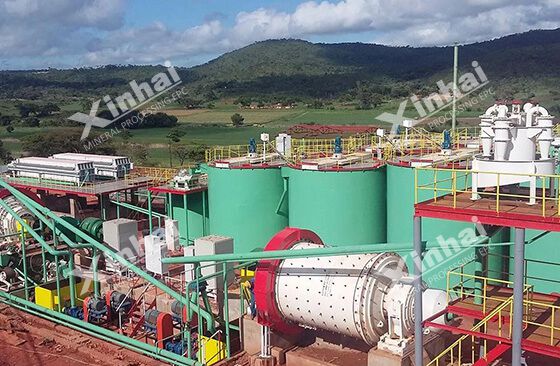
Usually, carbon leaching method for gold extraction (CIL) process mainly includes pulp impurity removal, concentration before leaching, leaching and adsorption, desorption electrolysis, pyrometallurgy, activated carbon regeneration.
Use the table of contents below to navigate through the guide:
01Pulp impurity removal
Before leaching and adsorption of the cyanide pulp, it is necessary to remove the wood chips and other impurities in the pulp, so as to avoid the impurities adsorbing the gold in the pulp, preventing it from mixing into the rich carbon and blocking the pipeline and carbon screen. If necessary, the pulp can be concentrated. Besides, the scale remover can be added to reduce the scale formation on the surface of activated carbon and the screen.
Generally, one time of impurities removal operation is set before concentration and after grinding. The intermediate frequency linear vibrating screen is often used as the impurities removal equipment, and the size of the screen hole is selected as small as possible under the premise of ensuring that the screen surface does not run.
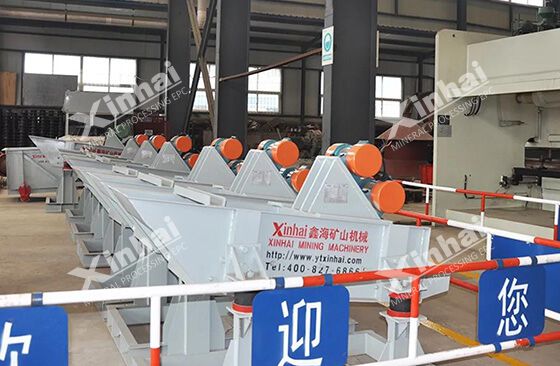
02Concentration before leaching
The concentration of pulp can not only affect the leaching time, but also affect the suspension state of activated carbon. In order to achieve the appropriate leaching concentration of the pulp, it is necessary to dehydrate the pulp through the thickener before leaching.
When the overflow concentration of grinding classification is 18-22%, it is not suitable for direct leaching, and the pulp must be concentrated first. At this time, it is recommended to adopt the high-efficiency thickener with small occupation area and high concentration efficiency.
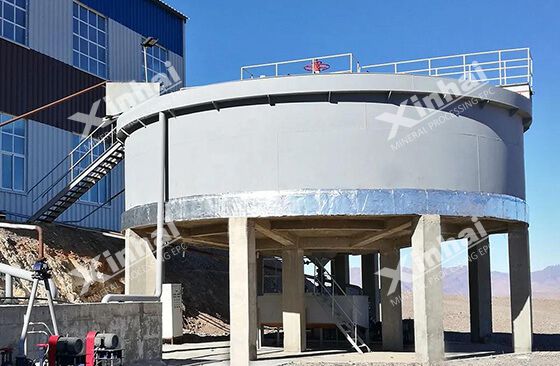
03Leaching and adsorption
One of the obvious characteristics of CIL process is that the leaching and adsorption of gold are carried out at the same time. And the size and quantity of leaching tank are determined according to the size of the processing capacity of gold concentrator.
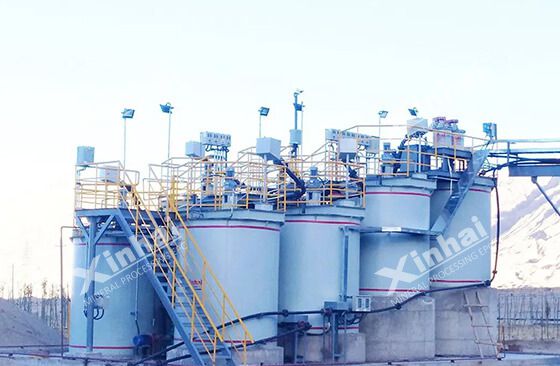
After the impurity removal and concentration, the pulp is pumped into the high-efficiency leaching tank arranged in a ladder shape. Generally, 5-12 leaching tanks are arranged in series. The cyanide is added to the first one or two leaching tanks and the activated carbon is added to the residual leaching tank. Because the sodium cyanide is just added to the first one or two leaching tanks, the amount of leaching gold is less, so most gold CIL concentrators will take the first one or two leaching tanks as the preleaching tank, and the residual leaching tanks as the leaching adsorption tank.
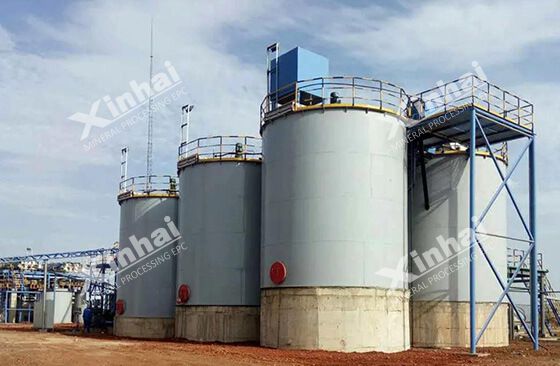
Generally, each leaching tank is equipped with a carbon screen to separate activated carbon and pulp. The activated carbon and pulp are adsorbed countercurrent, the fresh activated carbon is added from the last leaching adsorption tank, and the gold-bearing carbon is discharged from the first leaching adsorption tank. The activated carbon becomes the gold-carrying carbon due to the adsorption of gold in the pulp. After the completion of the adsorption operation, the pulp containing gold-carrying carbon is sent to the carbon lifting screen through the air lifter to separate the pulp from the activated carbon. After screening and washing, the pulp is sent to desorption electrolysis operation. Finally, the gold grade of the pulp solution after adsorption by this method is generally 0.01-0.03g/m³.
04Desorption electrolysis
At present, the desorption method of gold-bearing carbon is high temperature and high pressure desorption method. That is, under the conditions of high temperature and high pressure, the anion that is easy to be adsorbed by activated carbon is added to the desorption system, and Au(CN)2- is replaced to get the gold sludge and poor carbon, so as to realize the desorption of gold.
The pregnant solution obtained by desorption of gold carbon is recovered by ionization to obtain the solid gold.
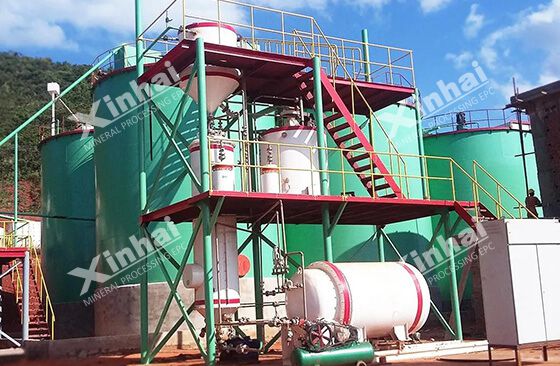
05Pyrometallurgy
In production, most gold CIL concentrators adopt the pyrometallurgy method, that is, the gold slime obtained by simple pickling and impurity removal is directly smelted into gold ingot. After the pyrometallurgy process, the purity of gold ingot can reach more than 99.99%.
06Activated carbon regeneration
The activated carbon after adsorption and desorption needs to be regenerated to recover its adsorption performance. Usually, the activated carbon after desorption removes the carbonate and other accumulations by pickling. After many times to use, it needs the thermal activation to restore the adsorption activity of activated carbon, then can be recycled again. The equipment required for activated carbon regeneration mainly includes activated carbon pickling tank, neutralization tank, regeneration kiln, fine carbon separation sieve, water quenching tank, etc.
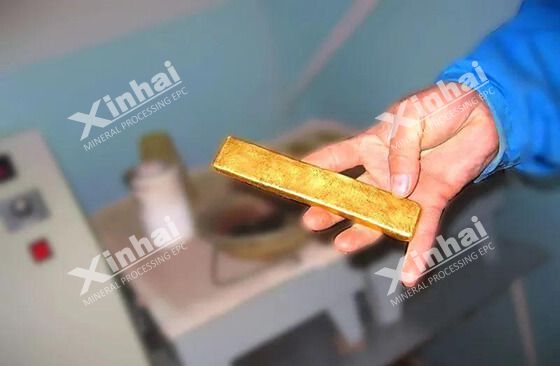
Carbon leaching for gold extraction (CIL) process has the strong adaptability to ore, and is suitable for most types of gold ore. It is featured with simple process, low investment cost, easy to operate and high gold recovery rate. In the practice, it is suggested to carry out the mineral processing test, determining the scientific and reasonable technological process and technical parameters according to the results of mineral processing test.


 marketing@ytxinhai.com
marketing@ytxinhai.com  0086 13810327080
0086 13810327080 






































































































 CHAT
CHAT MESSAGE
MESSAGE






